A lush and healthy front lawn can do wonders for the curb appeal of your home. And since good landscaping can make your home 20% more valuable, it’s something you really do not want to neglect. Whether you have a large, sprawling front lawn or a tiny one, you might not even realize it, but you could be guilty of some bad habits that are actually wreaking havoc on your grass.
While it’s true that grass is fairly resilient, that doesn’t mean it’s indestructible. Even if part of your lawn is shaded, don’t give up on it! A healthy lawn requires a little more TLC than just mowing every few days and calling it quits. The good news is that lawn care doesn’t have to be a time-consuming, dreaded task. As long as you avoid the following bad habits, your lawn should reward you with a healthy, vibrant green color and pure softness underneath your bare feet.
Mowing your grass way too short
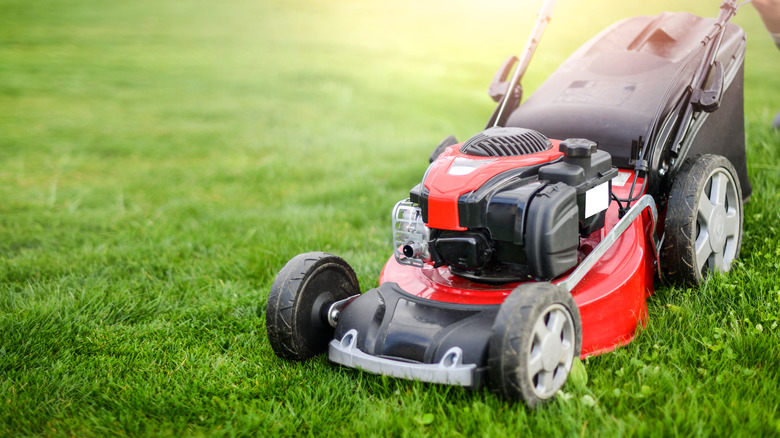
It’s a common misconception that cutting your grass short translates to longer time in between mowings. The reality, though, is that cutting too short does a lot of damage that you may not see with your naked eye. According to Lawn Doctor, short grass can end up taking on a yellow hue or “burn.” Too much sun exposure thins out the grass and frees up space that allows weeds to start creeping in.
Another issue is that root system depth is directly impacted by the length of the grass blade. Translation? The roots will only grow as deep as the grass is tall. You want your roots to be as deep as possible because this improves their water absorption, thus leading to healthier grass overall. Taller blades of grass can soak up more sunlight. This is a critical piece of the photosynthesis process, and any disruptions of this process will negatively impact the health and strength of the grass (via SFGATE).
Lawn Doctor stressed that mowing ⅓ of the grass blade is as high as you should ever go. Keep in mind, too, that how often you break out the mower to cut your grass should be based on how quickly your grass grows (via SFGATE).
Overwatering
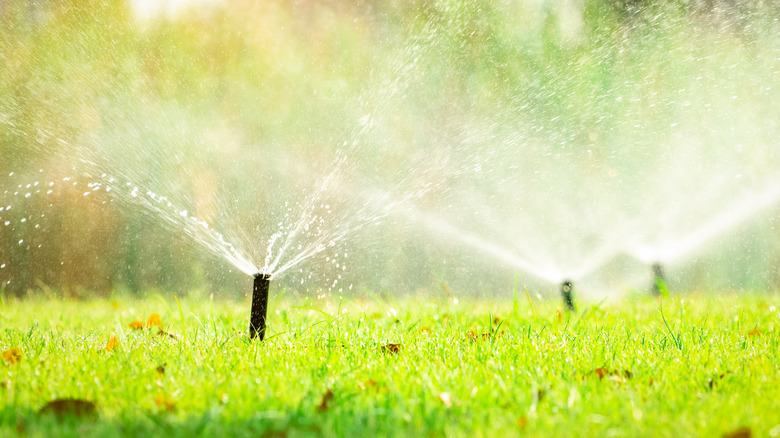
All plants need water to survive, but too much of a good thing isn’t always a good thing. And when it comes to your lawn, too much water can actually translate to disastrous results. Lawn Star stated that if you water every day, it promotes a shallow root system, which can then lead to disease, insects, and weeds.
Another problem? Your grass can become dependent on these daily waterings. So if you go away for a week-long vacation and no one’s there to water, you’re going to come back to a parched, dried-out yard. Instead, choose one day per week to give your lawn a good, long drink. This means watering for about an hour of steady water. Weekly deep waterings will lead to a healthier, more drought-resistant lawn, and the results will be happy ones.
If you’re unsure whether you’re overwatering or under-watering, look for mushrooms in your yard. According to Bob Vila, the presence of fungi in your yard is a telltale sign that it’s getting too much water. Sometimes, mushrooms can pop up as the result of a big rain shower as well, but if that’s the reason they’re there, they should disappear pretty easily. If they stick around or reappear frequently, reduce your watering to give your lawn time to dry out.
Cutting your grass with a dull blade
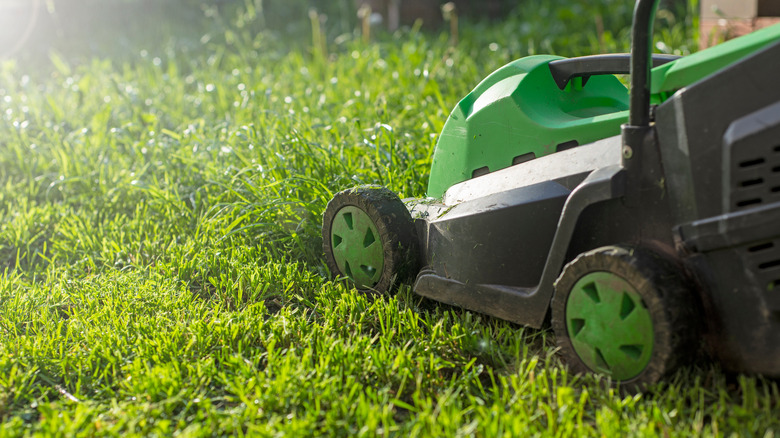
Shutterstock
Let’s discuss your tractor or mower, because that’s an important subject when it comes to your lawn. While removing your mower blades to have them sharpened or replaced can be an inconvenience, a little hassle doing the task is well worth the time. The pros certainly outweigh the cons, because using a dull blade causes serious damage to your lawn. According to Executive Lawn Care, the dull blade tears up the grass, and it will not result in a smooth, even cut. Since this places extra stress on the grass, it has to use additional energy now to recover the damage. This will leave your lawn more susceptible to disease and weed infestation.
What is a telltale sign that your blade isn’t sharp enough? Executive Lawn Care suggested keeping an eye on the color. If your grass starts to turn a sickly shade of brown, dull blades are the most likely culprit. Get down to examine your grass closeup. If the blades look frayed, scraggly, or torn, sharpen your mower blade as soon as possible. An added bonus? Regular maintenance or replacement of the blades can make your mower last longer. So staying on top of the blades on your mower is really a win-win all the way around. You and your lawn will be happy with the results.
Not giving your lawn the fertilizer it needs
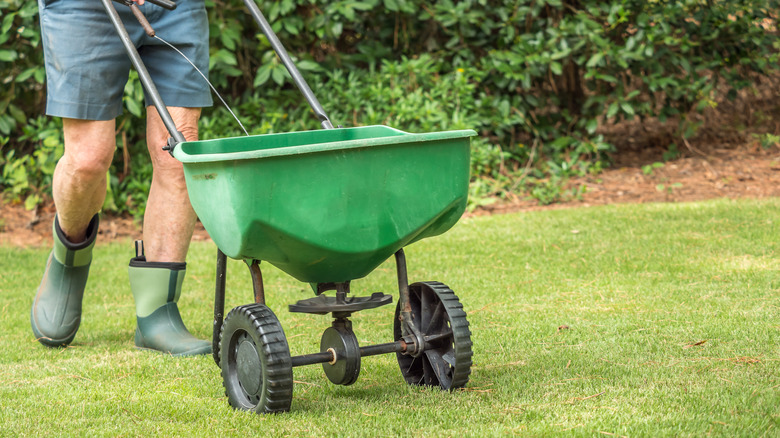
Shutterstock
Like most other plants in the garden, grass can also benefit greatly from some additional nutrients. According to Engledow, a landscape design and maintenance company, grass doesn’t always produce enough potassium, nitrogen, and phosphorus, so it’s an important step to help it along by using fertilizer. You don’t want to be heavy-handed in the application, though. Less is more when it comes to lawn fertilizer, because too much of it can lead to fertilizer “burn.” Your grass will turn yellow or a crispy brown if this happens, so proceed with care.
Plan ahead before you apply your fertilizer. If you do it in the dead heat of summer, your chances of damaging your lawn increase (via Today’s Homeowner). However, if your lawn desperately needs nutrients and you can’t make it through the summer without doing something, a lawn care company can apply fertilizer properly so that any chance for damage is minimal. If you get into the habit of consistent fertilization, your lawn will be healthy, vibrant, and able to fight back against weeds.
Removing your lawn clippings post-mowing
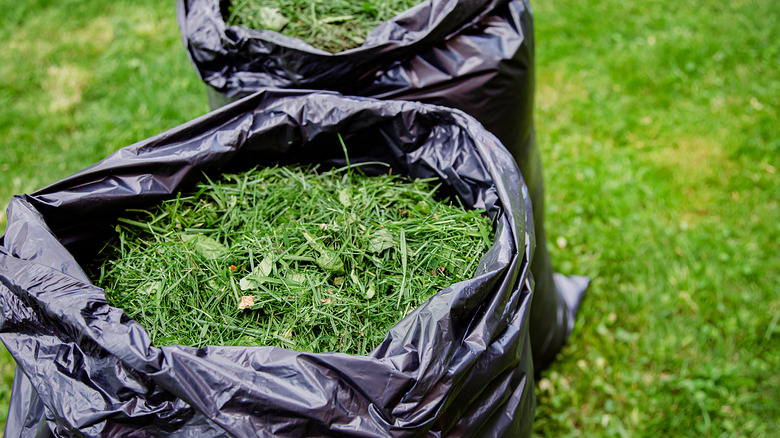
Shutterstock
If you remove leftover lawn clippings every time you mow, you might be doing more harm than good. While it’s a common belief that the clippings must be removed in order to prevent thatch problems, science has shown this is actually just a myth. If you’re unfamiliar with thatch, it’s a layer of plant material that builds up over time in the middle of the grass and its roots. Too much thatch can actually suffocate the soil and block it from getting the moisture, oxygen, and nutrients that it needs (via NG Turf).
Family Handyman noted that more recent research proves that lawn clippings do not cause thatch. As a matter of fact, the results showed that the clippings break down and actually return nutrients back into the grass. It’s estimated that clippings are comprised of about 80% water, so they break down more quickly and easily than other plant materials. Grass clippings can provide a bunch of the nutrients that your grass needs — that’s free, organic fertilizer that you’ve been bagging up and throwing away! Next time, leave the clippings where they fall. Your lawn will thank you.




